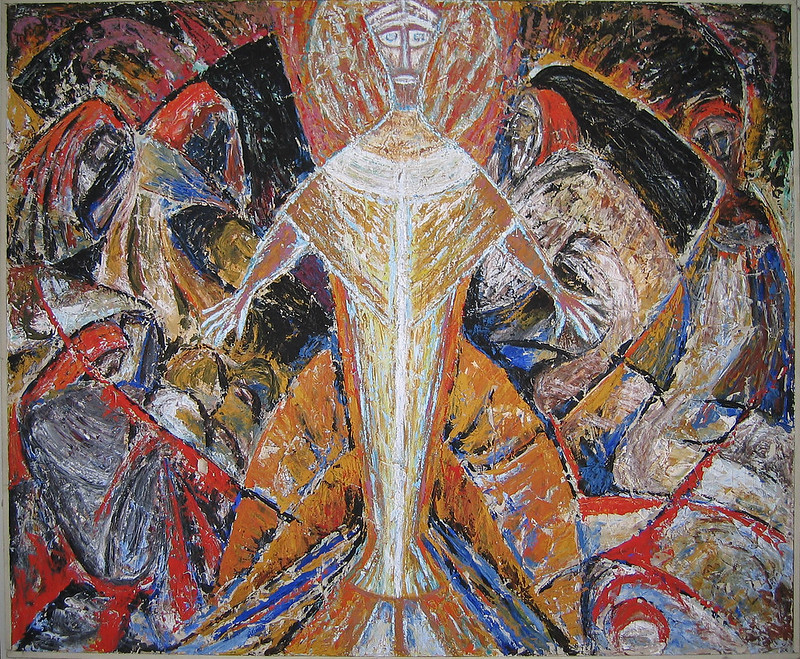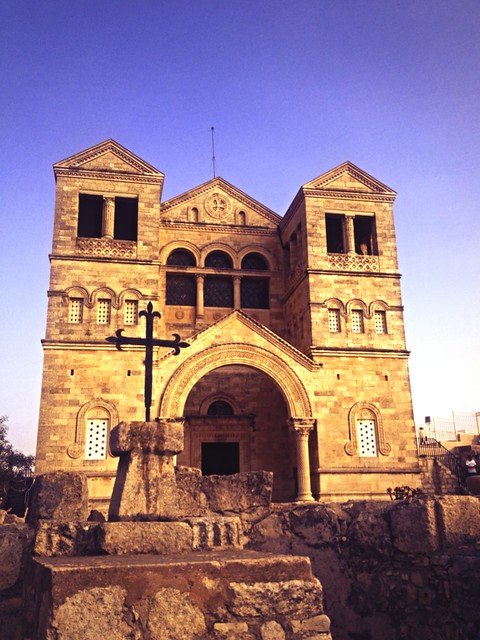Jesus Is What God Has To Say
>
Jesus Is What God Has To Say
Brian Zahnd
One of the most mysterious aspects of the Transfiguration is the appearance of Moses and Elijah — these two giant figures from the Old Testament — conversing with a glorified Christ. Of course Moses the Lawgiver and Elijah the Prophet are representative figures signifying the Law and the Prophets. On Mount Tabor, Moses and Elijah are summoned from the Old Testament past to give their final witness.
The goal of the Law and the Prophets was to produce a just and worshipping society. Jesus and his kingdom is where that project finds its fulfillment. The new society formed around Jesus was what the Law and the Prophets were aiming for all along. The Transfiguration is where Moses and Elijah find their great successor. The Transfiguration is where the Old Testament hands the project of redemption over to Jesus. The Transfiguration is where the old witness (testament) yields to the new witness (testament.)
But initially Peter misinterpreted what the presence of Moses and Elijah meant.
Peter’s first impulse was to build three memorial tabernacles on Tabor, treating Moses, Elijah, and Jesus as approximate equals.
But Peter’s idea received a strong rebuke when the voice from heaven said, “This is my beloved Son, listen to him!”
Jesus is the true and living Word of God. Jesus is what the Law and Prophets point toward and bow to. Jesus is what the Old Testament was trying to say, but could never fully articulate. Jesus is the perfect Word of God in the form of a human life. God couldn’t say all he wanted to say in the form of a book, so he said it in the form of Jesus. Jesus is what God has to say!
The Law and the Prophets were the lesser lights in the pre-Christ night sky. They were the moon and stars. Israel could grope forward by their soft light; the Hebrews could navigate through the pagan night by constellations. In a world of Stygian darkness, the moonlight and starlight emanating from the Torah and the Prophets made all the difference.
But with Christ, morning has broken, the new day has dawned, the sun of righteousness has risen with healing in its rays. Now the moon and the stars, Moses and Elijah, the Law and the Prophets are eclipsed by the full glory of God in Christ!
The Old Testament is not on par with Jesus. The Bible is not a flat text where every passage carries the same weight. This is why Jesus says, “You have heard it said, but I say to you…” When the church tries to embrace Biblicism by giving the Old Testament equal authority with Christ, the Father thunders from heaven, “No! This is my beloved Son! Listen to him!”
So if Moses says to practice capital punishment, to stone adulterers and other sinners, God says, “Listen to Jesus!” And Jesus says, “I desire mercy and not sacrifice.”
If Elijah calls down fire from heaven to burn up his enemies, God says, “Listen to Jesus!” And Jesus says, “Love your enemies.”
The Pharisees in their desire to condemn sinners to death can quote the Bible and cite Moses. But Jesus says something else.
James and John, in their zeal to go “shock and awe” on the Samaritans and call down fire from heaven, can quote the Bible and cite Elijah. But Jesus says something else.
Moses says this. Elijah does that. But Jesus says and does something completely new and different.
And what does God say? Does God instruct us to find a “healthy balance” between Moses, Elijah, and Jesus? No! God says, “Listen to my Son!”
If we want to rummage around in the Old Testament and drag out Moses or Elijah or Joshua or David to “balance out” what Jesus teaches about peacemaking and enemy-love, we are trying to build an Old Testament tabernacle on the holy mountain of Christ’s glory and God says, “No!”
The role of the Old Testament is to give an inspired telling of how we get to Jesus. But once we get to Jesus we don’t build multiple tabernacles to “balance out” Jesus. Jesus is greater than Moses. Jesus is greater than Elijah. Jesus is greater than Biblicism. Moses can stone sinners and Elijah can burn up enemies, but for a Christian that doesn’t matter. We follow Jesus.
It’s not “Biblical principles” that we seek, but the truth of Christ.
It’s not “Biblical justice” that we pursue, but Christlike justice.
It’s not “Biblical manhood” that men should aspire to, but Christlike manhood.
It’s not “Biblical womanhood” that should inform women, but the light of Christ.
Wars of conquest, violent retribution, the institution of slavery, and women held as property are all “Biblical.” But when placed in the light of Tabor they must be renounced. What was once acceptable in the dim light of Moses and Elijah is now rejected in the light brighter than the sun shining from the face of Christ.
Today Moses and Elijah (the Law and the Prophets) do one thing: They point to Jesus!
I’m a Christian, not a Biblicist. Yet I love the Old Testament. I read it everyday. I call it Scripture. Sacred Scripture. But I never read it without Jesus. Jesus is my sponsor for admission to the Old Testament. (Why else would a Gentile read ancient Jewish Scriptures?) I don’t read the Law and the Prophets by the light of Moses and Elijah; I read the Law and the Prophets in the light of Christ. So if Moses instructs capital punishment and Elijah models violent retribution, I remember Mount Tabor…
“A voice came out of the cloud, ‘This is my beloved Son, listen to him!’ And suddenly, looking around, they no longer saw anyone with them but Jesus only.” –Mark 9:7, 8
The final testimony of Moses and Elijah is to recede into the background so that Jesus stands alone as the full and true Word of God.
Jesus is what God has to say!
BZ
(This Sunday is Transfiguration Sunday in Western churches. The artwork is Transfiguration by Libuse Lukas Miller.)
Here is a picture I took of the Monastery on Mount Tabor when Peri and I were there last year.
